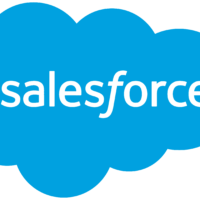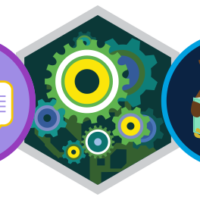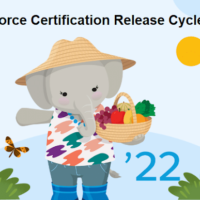Q1. What is a Salesforce Business Analyst?
Answer: A Salesforce Business Analyst is someone who works on projects to help companies improve their processes and efficiency using Salesforce. They listen to the company’s challenges, gather information and analyze it to create a plan. The plan includes solutions that are based on data to improve the company’s overall performance.
Q2. What is Enterprise Analysis?
Answer: A Salesforce business analyst is a person who works on initiatives to assist businesses in adopting Salesforce to increase productivity and efficiency. In order to develop a plan, they gather data, do research, and listen to the company’s concerns. The strategy comprises recommendations to raise the performance of the organisation as a whole.
Q3. What is Strategy Analysis?
Answer: The process of performing research on a business and its operational environment in order to develop a strategy is referred to as strategic analysis.
Q4. What is Stakeholder Analysis?
Answer: Stakeholder analysis is the process of identifying these individuals before to the start of the project, classifying them according to their levels of involvement, interest, and influence in the project, and figuring out the best ways to involve and communicate each of these stakeholder groups.
Q5. What is Requirement Elicitation?
Answer:
Researching and learning about a system’s requirements from users, clients, and other stakeholders is called requirements elicitation.
Requirements Elicitation normally takes place in three steps.
- Prepare for elicitation – The project’s business necessity should be thoroughly and accurately understood.
- Conduct elicitation – Meet with stakeholders to learn more about both their demands and the business’s needs.
- Confirm elicitation results – The project’s business necessity should be fully and completely understood. This will enable you to confirm that the specified requirements correspond to the problem and needs and guarantee that your understanding matches the actual objectives or intentions of the stakeholders.
Q6. What are some of the Elicitation Techniques?
Answer: Some of the commonly used Elicitation Techniques are:
- Brainstorming
- Document analysis
- Focus groups
- Interface analysis
- Interviews
- Observation
- Process modeling
- Prototyping
- Requirements workshops
- Surveys/questionnaires
Answer: RACI stands for responsible, accountable, consulted, and informed. It’s a matrix that delineates who is responsible for what in the context of the business analysis effort.
- Responsible: A person who performs an activity or does the work.
- Accountable: A person who is ultimately accountable for the outcome
- Consulted: A person who needs to provide feedback or contribute to the activity.
- Informed: A person who needs to know of a decision or action.
Answer: A user story describes the functionality that a business system should provide so that it can be developed. It is often called a ticket or work item. The format is “As a…. I want to… So that I can…”
There are three components of every user story.
- Who: From whose perspective (aka user persona) within Salesforce will this user story be written
- What: What goal will be accomplished or implemented within the Salesforce org as the result of the user story
- Why: Why does the user need the Salesforce functionality or feature outlined in the user story?
A successful user story is (INVEST):
- Independent: User stories should be independent and not overlapping in concept with another user story.
- Negotiable: A user story is not a contract. A story is an invitation to a conversation. It captures the essence, not the details.
- Valuable: The user story needs to be useful to the end user. If a story does not have value, it should not be created.
- Estimable: A successful user story’s timeline can be estimated. An exact estimate is not required, but just enough to help prioritize and schedule the story’s development/implementation.
- Small: Most effective user stories are small. Smaller user stories tend to get more accurate timeline estimates. Remember, the details can be elaborated through conversations.
- Testable: A good user story is testable. For a successful story, anyone on the project team can look at the user story and say, “Yes, I understand this user story so well that I can write acceptance criteria for it.”
Answer: A use case identifies, defines, and organizes the system requirements from the perspective of a user.
Q10. What is a Functional Requirements Specification (FRS) document?
Answer: Functional requirements specification (FRS) document details the business requirements that are defined from an end user or business perspective. It will specify the expected outcomes.
Q11. What is a System Requirements Specification (SRS) document?
Answer: System requirements specification (SRS) document details how the complete system should function and enumerates hardware, software, and functional and behavioral requirements of the system
Q12. What is a Gap analysis document?
Answer: GAP Analysis document describes the gaps between the current processes and the intended processes.
Q13. What is Requirement Traceability Matrix?
Answer: Requirement Traceability Matrix or RTM is a document that captures all requirements along with respective project deliverables such as design documents, test cases. A requirements traceability matrix may be used to check if the current project requirements are being met.
Answer: Pareto analysis is a formal technique useful where many possible courses of action are competing for attention. In essence, the problem-solver estimates the benefit delivered by each action, then selects a number of the most effective actions that deliver a total benefit reasonably close to the maximal possible one.
Answer: MoSCoW prioritization or MoSCoW analysis is a prioritization technique used in management & business analysis & project management, and& software development & to reach a common understanding with& stakeholders& on the importance they place on the delivery of each& requirement.
The term MoSCoW itself is an acronym derived from the first letter of each of four prioritization categories:
M – Must have,
S –Should have,
C –Could have,
W –Won’t have.
Q16. What is Business Analyst’s role in UAT?
Answer: Some of the key responsibilities of Business Analyst during UAT phase are:
- Validate test data setup
- Identify UAT testers
- Coordinate UAT sessions
- Write UAT test scripts
- Triage UAT defects
- Get UAT sign off
Q17. What is a Business Analyst and what does a Business Analyst do in a company?
Answer: A Business Analyst is a professional who works with organizations to help them improve their processes and systems. Their role is to gather information, identify problems, and find solutions to make the company run more efficiently and effectively.
Q18. What key skills should a successful Business Analyst have?
Answer: A successful Business Analyst should have strong communication skills, the ability to solve problems, analytical thinking, attention to detail, and the capability to work well under pressure.
Q19: Can you provide an example of a time when you analyzed a complex problem and how you solved it?
Answer: Sure! For example, I worked with a client who had trouble managing their inventory. I collected all relevant information and data, analyzed it to find the root cause of the problem, worked with the client to develop a solution, tested it, and finally implemented it to make sure it was effective.
Q20. How do you ensure that your solutions align with a company’s goals and objectives?
Answer: To ensure that my solutions are aligned with the goals and objectives of the organization, I make sure to communicate with stakeholders to understand their needs and expectations. I also regularly review the organization’s goals and objectives to ensure that my solutions support them. Additionally, I test and gather feedback on my solutions to make sure they are achieving the desired results.
Answer: Sure! I once worked on a project with a cross-functional team. To handle conflicts that arose, I made sure to keep open communication with all team members, actively listened to different perspectives, and found compromise solutions that satisfied everyone involved.





